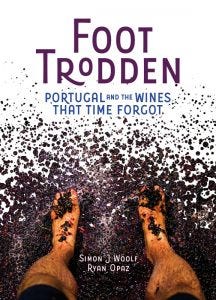New Portuguese wine discoveries at Simplesmente Vinho 2021
Simon reports back from the 2021 edition of Simplesmente Vinho, Portugal's most exciting celebration of artisan growers, natural and organic Portuguese wines.
ORDER OUR NEW BOOK ABOUT PORTUGUESE WINE
Simplesmente Vinho was the last wine fair I attended, in February 2020, before life shut down and a new normal established itself. So it's fitting that it's the first wine fair I attended in 2021.
Some might say that organising a wine fair amidst the current circumstances is madness, and a small number of Simpleme…
Keep reading with a 7-day free trial
Subscribe to The Morning Claret to keep reading this post and get 7 days of free access to the full post archives.




